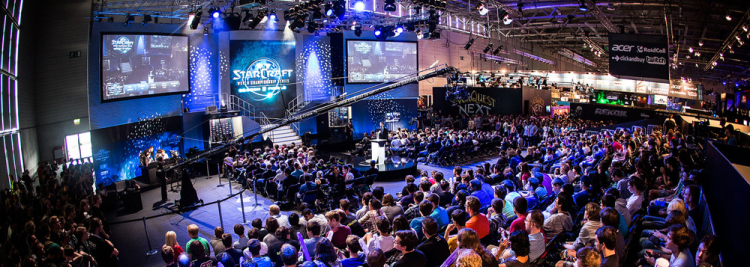If you’re not already paying close attention to the esports sector, then you most likely can’t appreciate how this industry is changing the shape of spectator sports.
A layperson will wonder who would want to stare at a digital screen, passively watching others play video games. But “passive” has nothing to do with it, and competitive gaming is likely the least passive spectator sport to ever exist.
Millennials, who are more or less half the esports population, are sold and committed to the mainstream staying power of competitive gaming and the reason why lies in how the interactive live streaming offers a three-way dialogue between streamers, or broadcasters, their viewers, and the viewers with each other.
As a broadcaster you get to screen share yourself and what you’re doing, but more importantly, you offer a live chat space that allows for an active pool of viewers to co-create the narrative alongside you. This is the gold dust that transforms an esports audience into the most engaged viewers the world has likely ever seen and brands are increasingly taking notice.
What happens in the live chat space is that viewers or fans feel they can have a say and have an impact on the process that the broadcaster is going through. As a broadcaster, it’s a natural part of the job to involve them in the experience, and the most popular ones will tell you that their popularity is largely due to the time they take to interact with their following.
Broadcasters can explain their thoughts, the rationale behind the decisions they have make, and their plans. Viewers aren’t simply onlookers sitting on their couches, seemingly talking to themselves or making an outburst with no one to hear. Broadcasters are hearing it, acknowledging it, and responding to it.
Competitive gaming is popular because it’s inherently social.
Viewers are interacting not only with streamers but also with each other. They are learning, sharing, and engaging each other about topics they are very well versed in. Unlike in traditional sports, many esports spectators are seasoned gamers themselves. It’s like a colosseum where most of the spectators are made up of gladiators. This is esports.
The relationship or interaction goes beyond just chatting and that’s where the real party is.
There are engagement and loyalty platforms like Revlo, which raised $1.1 million last May, which offers a virtual currency that viewers can earn through a variety of actions like watching broadcasts, participating in fun contests, and then spend on perks like getting to bet on what the broadcaster might do next or request their favorite song to be played.
Genvid recently released an SDK to offer interactivity to live streamers and even games are being developed with these kinds of interactive features built-in, like Amazon Game Studio’s Breakaway, which has deep integrations by design with sister company and leading esports broadcaster, Twitch.
Now here’s the thing: If you tie these platforms to the rest of the esports business model like subscriptions, microtransactions, in-stream purchases, advertising, event tickets, and merchandising, what will happen is a boon in monetization on all fronts. Each point in the monetization cycle becomes tied to a points-system that allows for viewers to earn, while they spend, on items, actions and opportunities that they are relevant and matter to them.
The trick is in the synergy that’s released when you converge it all together. The industry becomes a candy store for marketers and brands that will, however, have to resist the urge to copy and paste old marketing tactics into their eSports campaigns. Instead, they need to actively position themselves within the convergence, in which interactive live streaming rests at the center.
The “synergy” makes the jobs of community managers infinitely more interesting, it offers more opportunities for marketers and brands to engage a bubbling pool of viewers with multiple avenues for conversion, and all of it can be done without having a negative impact on all of the parties involved. The outcome is a steady narrowing of the value per average viewer gap relative to traditional sports, which is one of the most important priorities for the industry at the moment.
In many ways, esports might serve as an indicator of where spectator sports might be heading, but it’s too early to tell whether it’s a freak of nature or a propitious omen for the future.
Amir-Esmaeil Bozorgzadeh is the co-founder at Virtuleap, a sandbox for creative developers to showcase their VR concepts to the world, which is currently running the world’s biggest WebVR Hackathon. He is also the European Partner at Edoramedia, a games publisher and digital agency with its headquarters in Dubai.
VentureBeat's mission is to be a digital town square for technical decision-makers to gain knowledge about transformative enterprise technology and transact. Learn More

